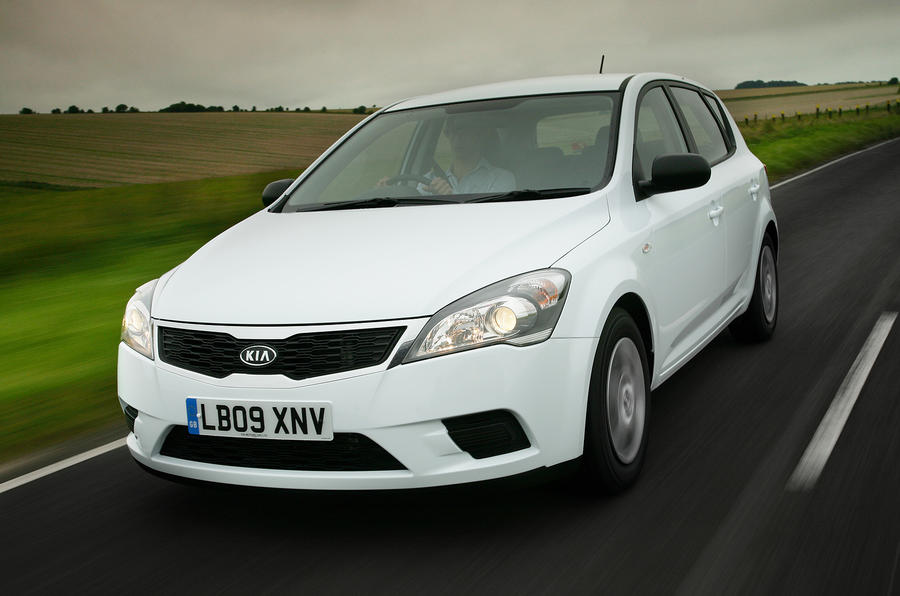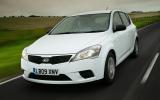What is it?
This is facelifted Kia Cee’d in mid-range 2 trim, equipped with the 124bhp 1.6-litre petrol engine. In the two years since Kia first brought the Cee’d out, petrol models have made up around 60 per cent of all sales, but the Korean firm expects to see this reduce to around 50 per cent for the facelifted model.
It gets the firm’s new family front-end, known as the Schreyer grille (named after German designer Peter Schreyer), and a redesigned interior, as well as a reworked suspension system tuned on European and UK roads with the help of Lotus and Porsche.
What’s it like?
Compared to the petrol model it replaces, there is certainly improvement. Kia has worked hard on improving the ride quality, which let down the original model.
Time has been spent on UK roads tuning the ride for British tastes and it certainly tells, and although the ride remains firm through town, it is smoother and suppler away from the city, especially on the motorway. Bumps are absorbed with minimal fuss, which gives the car a more dynamic feel overall, encouraging the driver to push on with confidence.
Handling too has improved, as the Cee’d responds well to being pushed on country roads. The steering, although well weighted, does feel a bit too artificial to properly engage the driver, but again, it’s a marked improvement over the existing Cee’d.
Looks wise inside and out, the Cee’d again is an improved experience. The new family face (its grille and headlights) was first seen on the Soul and will become a feature of future Kias. The interior gets a redesigned centre console and the Soul’s steering wheel, while extra standard kit in 2 trim over the GS model it replaces includes front fog lights and body-coloured door handles.
So if Kia has improved the ride, handling, looks and equipment, what’s the catch? Its faults lie mainly in its engine and gearbox, which let down an overall excellent package. You can see why Kia expects to shift more diesels this time around, as the 1.6-litre is noisy at motorway speeds and is crying out for a six-speed box.
The accelerator pedal feels more like an on/off switch when used from a standstill, which makes accelerating a noisy and jerky experience. Things improve once you’re through first and second gear and the Cee’d is more than capable with keeping up with motorway traffic.
But at motorway speeds, the Cee’d sits at a noisy 4000rpm, which is an inconvenience at first but could become irritating after extended use. Fuel economy is a claimed 46.3mpg, but on our test route it was always around 10mpg short of this on motorways and in the city.
Should I buy one?
There’s no getting away from the fact that the facelifted Cee’d is a much improved car. Kia quickly identified the original car’s faults and has quickly brought to a market within two years which rids it of its ride and handling issues.
But should you buy this particular petrol model? We think you’d be better spending you money on the diesel side of the range, which is superior on economy and emissions, as well as getting that crucial sixth gear that this model is crying out for.
Despite the faults of its powertrain, the petrol Cee’d does still have its two killer selling points – the seven year warranty and its competitive price tag. If you must go for the petrol model, these factors alone make the facelifted Cee’d a seriously tempting proposition.

























Join the debate
Add your comment
Re: Kia Cee'd 1.6 2
It seems that Autocar have fallen in love with Kia's, is it me or are they really as good as Autocar say they are ?